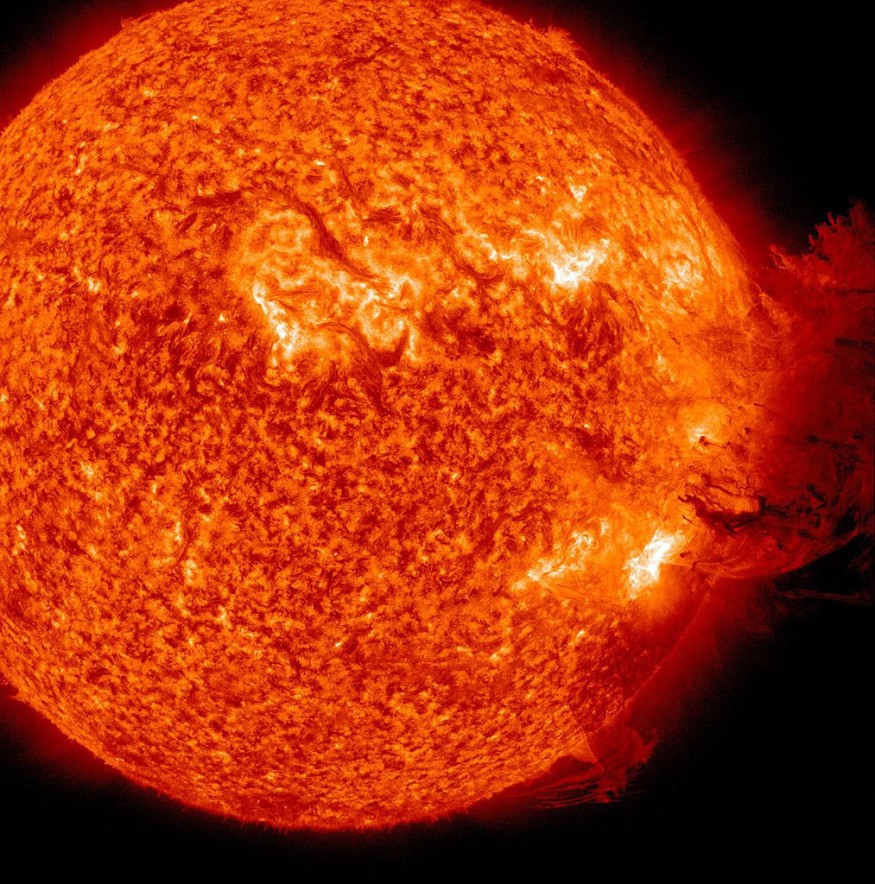Radio blackouts apparently occurred in some regions of the Earth after a solar storm from the Sun triggered a solar flare and a coronal mass ejection (CME) during the Easter weekend.
The solar outburst released a geomagnetic storm as part of continued solar activity from our solar system's only star over the past week.
The latest developments reveal that such space weather phenomenon may continue in the coming days, with the high potential of disrupting electric devices that rely on radio and satellite technology.
Radio Blackouts

Some parts of Australia and Southeast Asia experienced radio blackouts after the violent solar activity over recent days, according to emerging reports from multiple media outlets, including The Weather Channel.
Details of the purported large-scale power outages in the said sub-continents came after the National Oceanic and Atmospheric Administration (NOAA) - Space Weather Prediction Center (SWPC) on Monday, April 18, issued its latest dashboard regarding the recent solar storm-induced solar flare.
As a result, the US space weather agency issued solar storm warnings and the following risks in a three-day forecast until Wednesday, April 20:
- G1-class or greater levels of geomagnetic storms are expected but with no significant transient or recurrent solar wind features
- S1-class or higher categories of solar radiation are possible with no clear indication of solar activity favoring the formation of a radiation storm
- R1-class or stronger impacts of radio blackouts ranging from R1 (minor) to R3 (strong) levels due to the solar flare
Based on the above warnings, a geomagnetic storm, accompanied by solar radiation, can disrupt the Earth's magnetic field in the magnetosphere. This eventually causes the prolonged fading of radio communications or radio signals.
Also Read: Solar Storm Alert: Fresh Geomagnetic Storm Warning Issued, Earth Expected to be Hit on Thursday
Easter Solar Flare
A solar flare that peaked at 11:34 p.m. EDT (local time) on Saturday, April 16, was followed by a gigantic CME. NOAA - SWPC officials said they classified the flare as X1-level under the X-class storms, which are considered to be the most powerful space weather events of the Sun, as cited by Space.com.
The solar explosion reportedly came from sunspots in Region 2994 and Region 2993, located in the eastern limb of the Sun. The event led to the emissions of a "solar radio burst" that spawned a momentary radio blackout due to the shockwave of the solar storm.
Health and Technological Hazards
Disruption to modern technology, particularly radio and satellite signals, is not surprising during a solar storm event. However, the potential impacts of such space weather events must not be neglected since they may not only pose technological repercussions but also life-threatening risks.
For instance, large amounts of solar radiation can pose severe to lethal health hazards to both animals and humans.
According to the American Cancer Society, solar radiation in the form of ultraviolet (UV) radiation or electromagnetic radiation from the Sun may cause skin cancer. The organization also cited previous studies which suggest that it can cause Merkel cell carcinoma and melanoma of the eye.
Related Article: Can a Solar Flare Be Powerful Enough to Wipe Out All Life on Earth?
© 2026 NatureWorldNews.com All rights reserved. Do not reproduce without permission.





